Pressure Canning Fish Recipe
Learn how to can freshwater fish with the bone in, so you can make even the boniest fish edible!

I first started canning freshwater fish when my man and I discovered there was an overabundance of a "junk fish" in the river that runs through our valley. Pikeminnows were plentiful, but they were so full of bones, the most you can do is nibble at them after cooking.
Even though these fish are native to our northern waters, they feed heavily on the fry of other fish and are considered an invasive species. Which is why there's no limit on how many you can keep here in our Canadian waters!
For us, it's the perfect, freshwater fish for home canning. Pressure canning softens and even disintegrates the bones of small freshwater fish types.
So instead of throwing pikeminnows back, we began keeping every one we caught. After cleaning them, we would pop these fish into the freezer until I had enough to run a canner load in my dial gauge pressure canner.
Types of Freshwater Fish for Home Canning
The National Center for Home Food Preservation (most trusted canning site on the internet!) only gives directions for canning fatty fish like salmon, mackerel, tuna, etc. These fish hold their texture beautifully after being canned.
However, there are other online sources (like the SDSU extension) that gives directions for canning lean or white flesh fish. Here's a list.
- catfish
- carp
- northern pikeminnow
- northern pike
- shad
- smelt
- sturgeon
- trout
Panfish types like bass, perch, walleye, crappie, etc, will go mushy in the canning process. Freeze these fish to preserve them.

Canning Tools You'll Need
- pressure canner
- pint jars or 500 ml (half pints or 250 ml are great too)
- canning lids
- jar lifter
- cooling rack
- sharp knife
- cutting board
- papertowel
You must use a pressure canner to safely preserve fish via home canning.
Do not use a water bath canner, steam canner, pressure cooker or instant pot.
All fish and sea food are low acid foods and can carry the dangerous bacteria clostridium botulinum. To ensure your fish is safe for eating, high temperatures and long processing times are needed. You can only get these things with an actual pressure canner!
There are two different types of pressure canners you can use for fish: a dial gauge pressure canner or a weighted gauge pressure canner. In my kitchen, I like to use the weighted gauge, but both types will give you safe home-canned fish in the end.
Ingredients
- fresh fish
- vinegar
- salt
Pressure Canning Fish at Home
Prepare Your Fish
When it comes to home canning, fish and seafood have the highest risk of causing food or botulism poisoning. Handling your fish properly helps negate some of the risk.
Fresh Fish
If you catch your own fish and intend to can them, be sure to remove internal organs within 2 hours of catching. Keep the fish chilled until ready to pressure can.

Frozen Fish
Don't have an abundance of fish? After cleaning it, you can freeze your catch until you have enough to run a full canner load. Just be sure to completely thaw the meat in your fridge before canning.
I like to wipe thawed fish with vinegar to remove slime before I pack it into jars.
Make Canning Equipment Ready
Wash your wide mouth jars, collect lids and add water to the bottom of the canner, as directed by your manufacture's instructions. Also be sure to add the canning rack!
Raw Pack Fish Into Jars
Remove fins and tail from your fish. When working with smaller fish, you don't need to remove the backbone. Just cut each fish to length so it will fit in your glass jars while still leaving 1-inch head space.

Add salt to bottom of the jars. Slide fish in, with skin side against the wall of your jar. Do not add liquid.
Wipe the rim of your jars with vinegar, then add lids and canning bands.
Process Fish in the Pressure Canner
Set jars in the bottom of canner and fasten the lid. Turn heat up and wait until you see a steady stream of steam escaping.
Let it vent for 10 minutes, then bring it up to the proper PSI for your altitude and pressure canner type.
You can get step-by-step directions and a complete guide for your canner type and altitude at the National Center for Home Food Preservation. Or, you can check out the printable recipe card below.
Process fish for the recommended length of time, then let your canner sit undisturbed until your dial reads 0. Open canner and set hot jars of fish on a cooling rack.
Let Jars Cool and Store
Let your pint jars of fish sit for 8 hours or until they reach room temperature. Test each jar of fish for a seal. Refrigerate any that failed and the sealed jars are safe to store at room temperature.
Shelf life of home canned fish is 1 year.

Common Questions on Canning Fish at Home
Can any type of fish be canned?
As far as freshwater fish are concerned, bass, bluegill, crappie, perch, sunfish and walleye (panfish) aren't good candidates for the home canner because of their soft texture. They do much better in the freezer!
Can I pressure can fish in quart jars?
Yes, but you need to follow a special set of directions for jars larger than a pint. You can learn everything you need to know in this tutorial right here.
Should I add olive oil, clam juice or other liquids to my home canned fish?
No. Don't add any liquid to your home canned fish. If you properly fill your jars, the fish will create juices of its own, without turning the meat into a mushy mess.
Is it safe to pressure can smoked fish?
It is safe to can smoked fish if you use the cold smoking process. But smoked fish comes with its own set of directions. You can get safe instructions RIGHT HERE.

How to Use Home Canned Fish
There are soooo many ways to use your delicious canned fish in the kitchen! Here's a few ideas.
- fish sandwich (treat like tunafish)
- fried fish cakes or patties
- fish pasta
- fish chowder
- Mediterranean fish salad
- Sicilian fish soup
- sushi

How to Pressure Can Fish
Equipment
- pressure canner
- 7 pint jars
- jar lifter
- cooling rack
- sharp kitchen knife
- cutting board
- paper towel
Ingredients
- fresh or thawed fish
- 1 teaspoon of salt per pint jar
- white vinegar for wiping down fish
Instructions
- Add water to your canner and set on the stove.
- Prepare your fish by removing head, tail and all fins.
- If skin is slimy, dampen a paper towel with vinegar and wipe down so fish is easier to handle.
- Remove backbone in large fish (such as steelhead).
- Cut fish into lengths according to jar height, being sure to leave 1-inch headspace at the top.
- Add 1 teaspoon of salt to pint jar (only 1/2 tsp for half-pints).
- Pack fish into jars.
- Wipe jar's rim with vinegar.
- Fasten canning lid and band into place.
- Put jars in pressure canner and tighten lid.
- Turn burner to high and wait until you see steam escaping from the vent.
- Set timer and let steam escape from vent for 10 minutes.
- Put weight on vent (or close if you have an old fashioned canner).
- Bring pressure canner up to the proper PSI for your canner type and altitude.
- When the proper PSI is reached, start your timer and monitor canner to be sure it stays in the proper PSI range.
- After timer goes, turn off stove burner and let canner sit undisturbed until the dial returns to 0. Do not remove weight, open valve, or remove lid during this time.
- When your dial reaches 0, you can remove the weight or open the vent.
- Carefully remove the canner lid, being sure to lift the far side first to avoid getting a nasty steam burn.
- Use a jar lifter to set hot jars on cooling rack.
- Let jars of fish sit undisturbed for 8-12 hours.
- Test jars for a seal, putting any that failed into the fridge to be used in a week's time.
- Sealed jars of fish can go on a pantry shelf and are stable for 1 year.
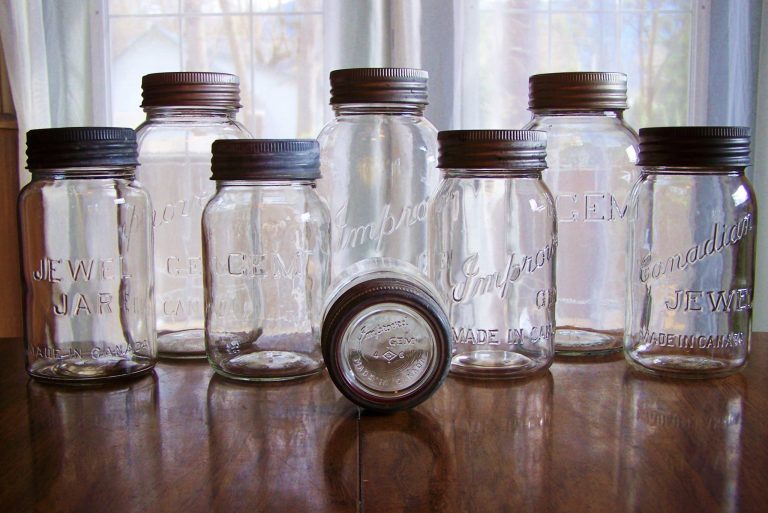
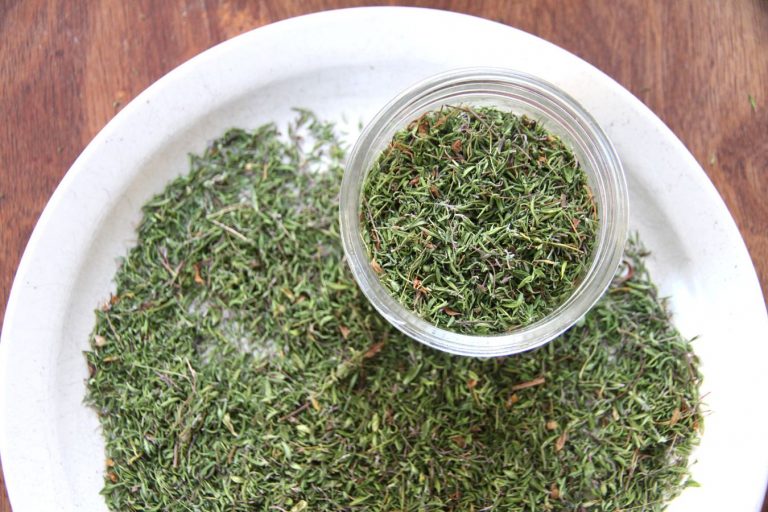
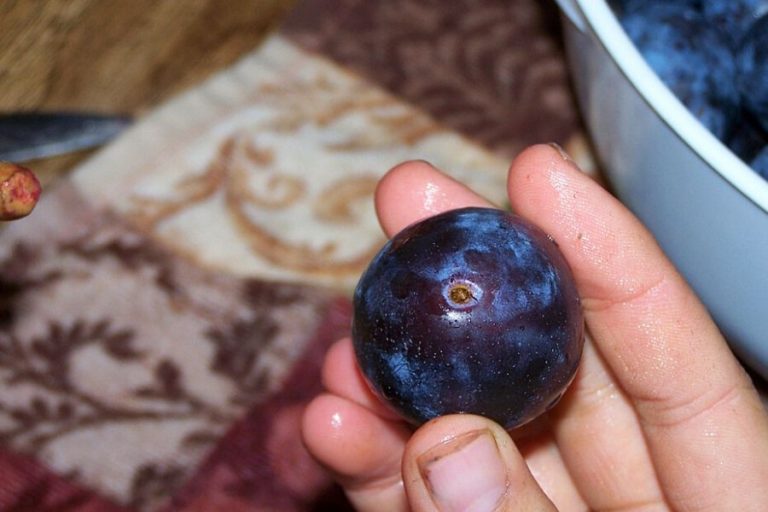

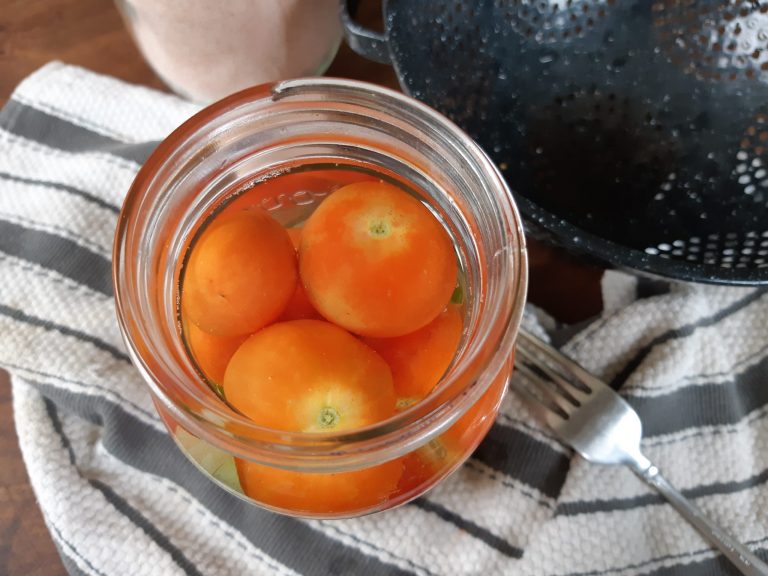
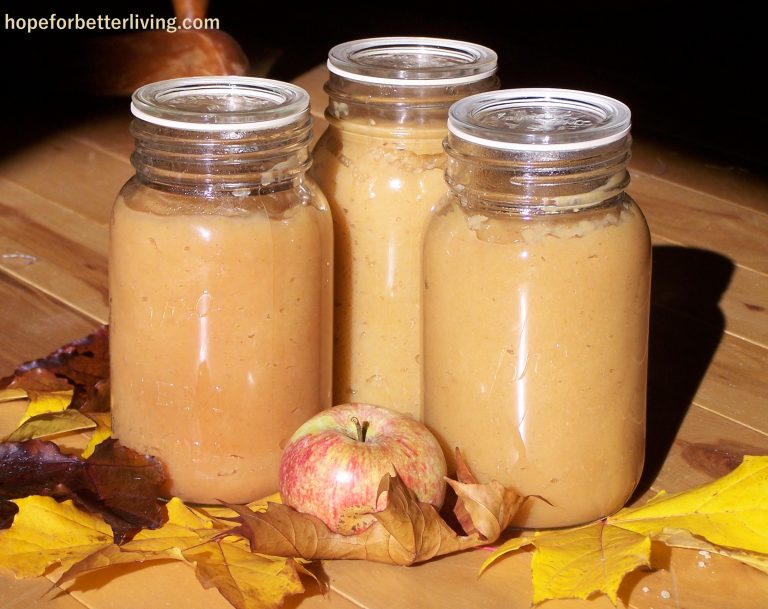
Super job on this! Doing fish for the first time tomorrow. I’m following all the rules and am really excited! Should be fun and again my thanks!
Hello,
Great article. I am trying to find the timing on canning fish in quart jars. I have done it before but when I go to the NCHFP there is only recommendations for pints. Therefore, your link to the site does not offer information on canning fish in quarts. I'm quite sure I followed their recommendations when I did it before.
Also, their contact form doesn't work, probably because the web address is considered invalid by gmail. So, it seems to me someone got hired at NCHFP that should not have been hired.
Anyway, do you have any other source. I will be looking. Thought you might like to know this though.
Sincerely
Hi Joe!
Thanks for pointing out the broken link. I've fixed and update my article, with directions for canning fish in quart jars from the University of Alaska.
I grew upon Canned fish. My mother learned from a friend how to can rough fish - Carp and Buffalo. We would skin the carp and buffalo, filet them off the spine but leave the rib bones in. The pressure cooking process makes the bones very soft and they are an EXCELLENT source of calcium! We skinned the carp and buffalo to get rid of the 'fishy' taste. We also cut the filets into strips about 1" to 1.5" wide, and to the proper length for the jar. Mom would use quart jars cause there was 6 in our family and a quart jar was sufficient to make enough patties for us.
It also makes using the canned fish, FAST because when you use canned fish with the skin on, then you have to waste time picking the skin off the fish before you make patties out of it. We used the canned carp and buffalo as a direct substitute for Salmon, and the carp has a MUCH less fishy taste than salmon did. I think my mother added a spoon of white vinegar to each jar as well, but don't hold me to it. I've not canned in fish myself, but I want to try Asian Carp to see how it taste. I'd like to do some common carp and some Asian Carp and compare the taste.
"I've not canned ANY fish myself," is what my last sentence was to say, instead of "I've not canned in fish myself, ..." Sorry!
Hi,
Can I can pickled fish and not have to refrigerate it?
Hi Steve!
I don't have any experience with canning pickled fish and can't seem to find anything about it among tested and approved canning recipes. But I do know that pressure canning meat makes it shelf stable. No refrigeration needed! Hope that helps.
Hi. Would i be able to batter & fry canned fish? Mane revert to patties to fry? I’d like to can halibut and flounder as well.
Thank you for your help
Hi Debbie! I've never personally made fish patties myself from canned fish, but I have had them in my sister-in-law's home. She would mix onion greens and lots of spices into her fish patties and fry them up in a cast iron skillet. Tasty!
Hi Autumn
I read that fish bones will only soften if the pressure canner is capable of reaching 20psi. Is this correct? Most of the canner models I see available seem to only get to 15psi. I want to can some larger fish and want to create that soft bone effect. Will a 15psi canner allow me to achieve this?
Hi Daniel!
I've never heard this before and seeing as non-commercial pressure canners are NOT supposed to be run at more than 15 PSI, I think you'll be fine! If the fish you are processing is very large, you can cut out the backbone (if you're worried). Otherwise, you'll be just fine! Good luck!
Just wondering if it is possible to can in quarts? I have been blessed with a ton of whitefish from a friend and I also have a large family. Quarts would make more sense for me, plus I have more quart jars than pints.
Hi Lisa!
Yes, fish can be canned in quart jars. However, the procedure is a bit different (because of how big the jars are). To learn how to safely process fish in quart jars, you need to follow the process found on the Nation Center of Home Food Preservation website. Go here (https://nchfp.uga.edu/how/can5_meat.html) and choose the "fish (quart jars)" option. Download the PDF, read it carefully and then fire up your canner!
Good luck!
Autumn
Thanks so much.
I want to can fish, however I've read where my pressure canner isn't large enough (?) per website: "Please Note: The All American Pressure Canner 910 10 Quart is not recommended for canning SMOKED fish as the size of this canner does not allow for adequate heating and cooling times." So maybe I can do raw but not smoked?
From what I've understood, smoked fish is unusual and does need to be carefully processed. I "think" you should be safe to can raw fish in your 910 All American pressure canner. If you live over 1,001 ft in elevation, fish must be processed at 15 PSI. As long as your canner is capable of doing this, I think you're safe.
I bottle smoked trout by the recommended fish canning recipe. If the fish have been smoked to a dryer texture, I have had to add water to the jars. Cannery smoked fish is very moist and requires about three Tbs of water in a pint jar (my preference).
I like it best filleted, smoked, and then skinned before I pressure can it. I have found that skinned requires a thin coating of oil in the jar. The smoked trout and salmon makes an excellent spread with cream cheese on bagels.
is it possible to can cooked razor clams? Thanks
I've never done it personally, but if you have a pressure canner, you can! Directions can be found on the NCHFP website here: https://nchfp.uga.edu/how/can_05/clams.html
and if they have been cooked, do I need to use a pressure canner or a pressure cooker is good enough?
In order to safely preserve meats you must process the goods in a pressure canner.
Thanks for your replies :), it is great that someone like you share your experience and knowledge.
I guess it is worth investing in a pressure canner and it is the safest way to do it, I have been good, so may be Santa ...
At the same time the high temperatures of 118°C necessary to kill the types of bacteria which may be present in fish can only be reached under pressure, and a pressure cooker should be good to reach this temperature but I won't try it myself.
At the moment, we will do our best to end up with the 3 Kg of razor clams with the help of our dog.
Sounds like a great Christmas idea! The reason you need a pressure canner is because you need temps in excess of 240F. Because all oxygen is removed from the jar during the canning process, there's opportunity for botulism (it needs an anaerobic environment) to develop. The excess of 240F ensures that spores are killed off and that botulism can't develop in your jars.
But if you precook your clams, you could safely freeze them! Good luck!
Surely you mean 140c? 140f isn't hot enough.
Yes, you're right! That was a typo. It should read "an excess of 240F! Thanks for catching that...I'll edit it right now! 🙂
I just found this page on canning fish. I want to can some thawed tilapia. I can't find anything on how to can that kind of fish. Do you know if it cans the same as your recipe?
I've never tried canning tilapia before, but I would think the process would be the same. Just make sure you remove the scales or else flay the fish!
Can this same method be used for salmon? shrimp? perch? tuna? cod?
Hi Tera! You can't process all types of seafood alike. You can find the safe processing times for shrimp, tuna and the like at the National Center of Home Food Preservation. Here's the link: https://nchfp.uga.edu/how/can5_meat.html
Is this the same method you used for trout?
I have a whole bunch of trout from this year I can't wait to try pressure canning!! 🤗
Thanks Autumn😊
Yes, I use the exact same technique for trout.
Can I add oil to the fish when canning? I have a bunch of arctic grayling I want to can
You aren't supposed to add fats or oils to your home canned meat, unless the recipes specifically says it's ok. And with fish, I don't think you're supposed to. 🙂